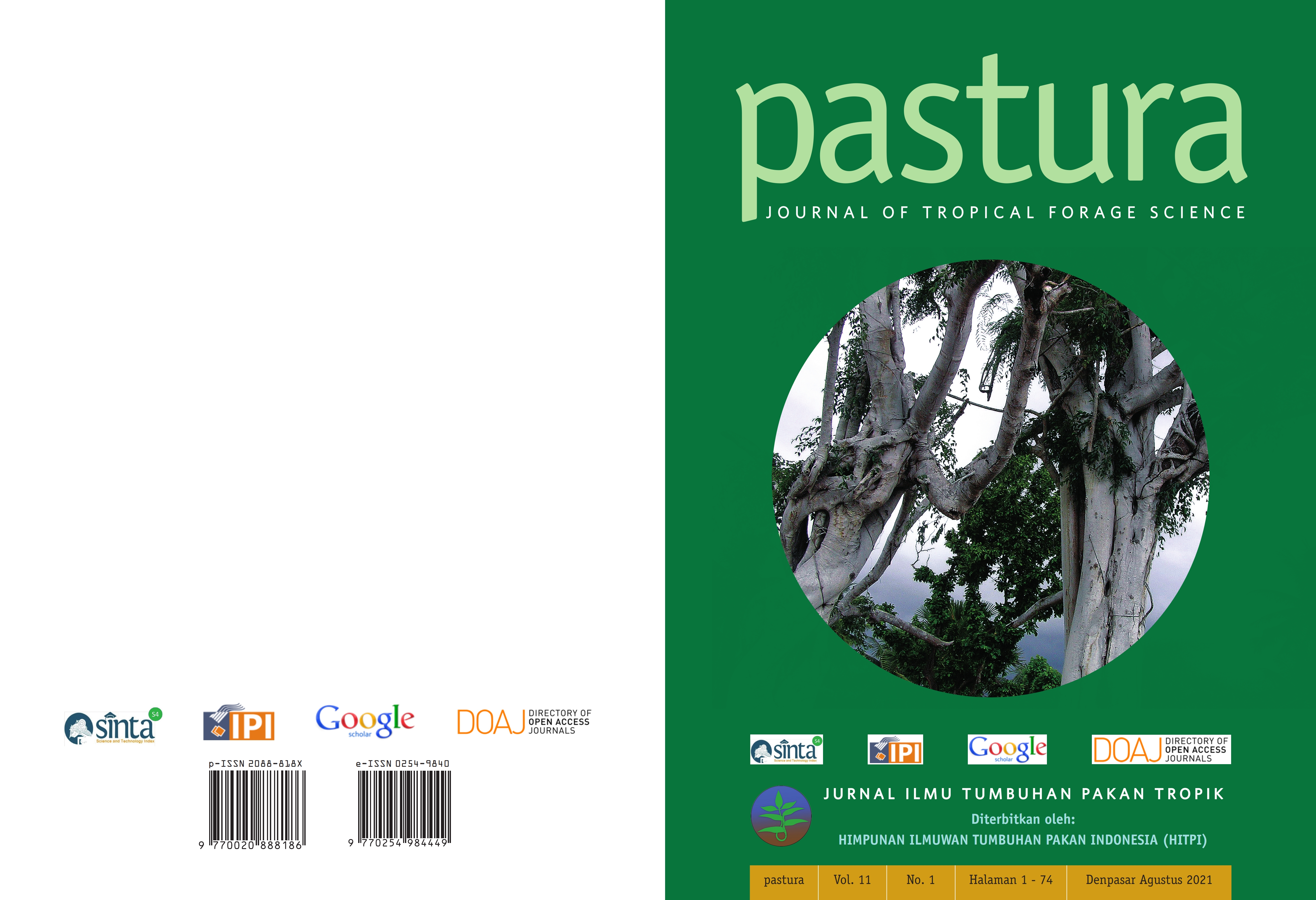PENGARUH UKURAN BIBIT DAN PUPUK ANORGANIK TERHADAP PERTUMBUHAN TANAMAN KELOR (Moringa oleifera)
Abstract
Ukuran bibit merupakan salah satu cerminan mutu bahan tanaman yang akan menghasilkan produktivitas
yang baik jika kebutuhan akan hara untuk pertumbuhannya terpenuhi melalui pemupukan. Penelitian ini bertujuan untuk mengetahui pengaruh ukuran bibit dan pupuk anorganik terhadap pertumbuhan kelor (Moringa oleifera). Penelitian menggunakan rancangan acak lengkap pola faktorial 3x3 dengan 3 ulangan. Faktor pertama adalah ukuran bibit (kecil, sedang dan besar) dan faktor kedua adalah pupuk anorganik (N; N dan P; serta N, P dan K). Ukuran bibit meningkatkan tinggi tanaman pada panen kedua dan jumlah tunas pada panen pertama dipengaruhi oleh ukuran bibit dan penerapan pupuk anorganik pada Moringa oleifera. Sementara itu, tidak terdapat interaksi antara ukuran bibit dan pupuk anorganik terhadap seluruh peubah yang diamati. Disimpulkan bahwa ukuran bibit sedang dan besar dan pemupukan dengan kombinasi lebih dari satu unsur hara (kombinasi N, P dan N, P dan K) menghasilkan pertumbuhan yang terbaik pada Moringa oleifera.
Kata kunci: Moringa oleifera, pupuk anorganik, ukuran bibit, pertumbuhan tanaman





